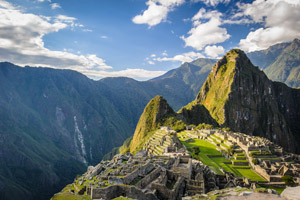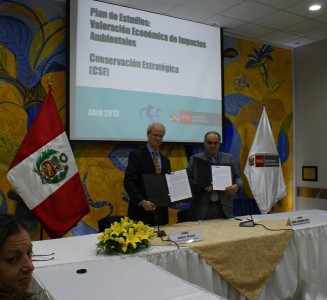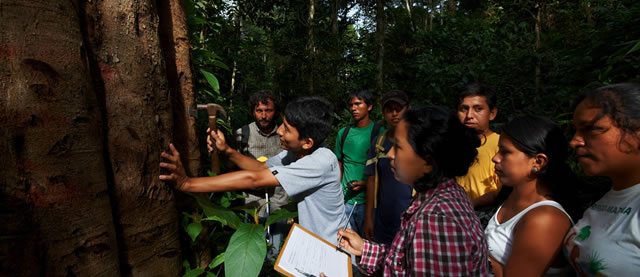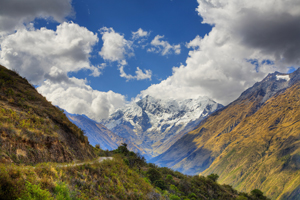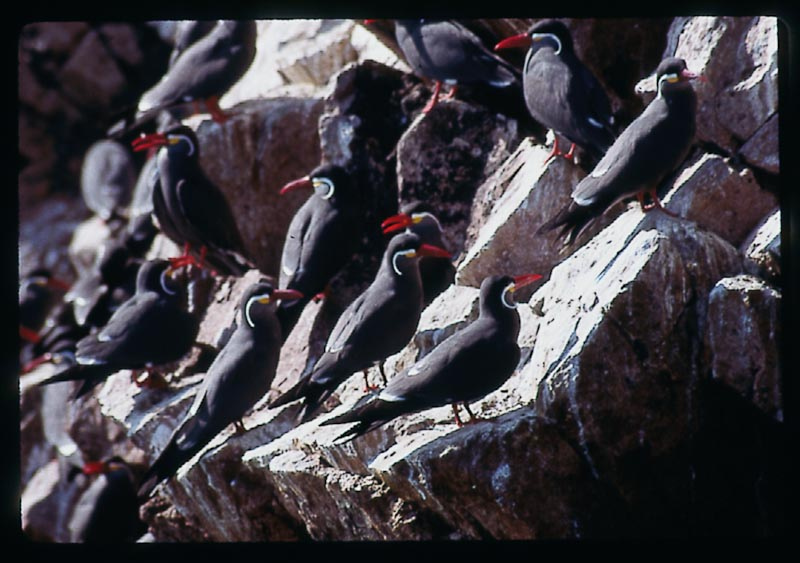News
Por: Claudia Ochoa, colaboradora
La tercera semana de enero visitamos la Amazonía peruana para avanzar con los preparativos del curso Herramientas Económicas para la Conservación en la Amazonía Andina: Manejo de Recursos Naturales y Sostenibilidad Financiera en Áreas Protegidas que se llevará a cabo en la ciudad de Iquitos entre el 9 y 20 de marzo del presente año.
John Reid, CSF President, and Mariano Castro, Deputy Minister of Environmental Management. Photo courtesy of MINAM; http://www.minam.gob.pe
Lima, Peru -- This morning, CSF President John Reid signed an agreement with Peru's Ministry of Environment (MINAM) to continue work on environmental compensation in Amazonian ecosystems. At least two case studies will be conducted.
Fernando León is a business school graduate most commonly seen in suit and tie. He’s also one of Peru’s most successful conservationists. His country has tropical forests covering an area the size of California, a coastline rich in marine life, and protected cultural marvels like Machu Picchu. A veteran of years working in the government, he was frustrated by the meager funding allocated to protecting the country’s natural heritage.
On April 29, CSF signed a convenio marco - an umbrella collaboration agreement - with Peru's Ministry of Environment (MINAM). For more information about this exciting partnership, click below:
http://www.minam.gob.pe/index.php?option=com_content&view=article&id=24…
I am pleased to write an update on the activities and conservation initiatives that I have been working on after attending Conservation Strategy Fund’s 2012 course, Economic Tools for Conservation, in Stanford, CA.
La Iniciativa para la Conservación en la Amazonía Andina (ICAA) felicita a los ganadores de las becas de las propuestas para Investigaciones Económicas Aplicadas para la Conservación en la Amazonia Andina, quienes recibirán hasta US$15.000 para desarrollar sus propuestas. Además, contarán con asistencia técnica y capacitación en teoría económica y análisis económico ambiental durante el tiempo que dure la investigación, a fin de mejorar sus capacidades para realizar estudios de investigación económica aplicada...
Haga clic aquí para leer mas
Photo Credit: ICAA/USAID
The Peruvian Ministry of the Environment (known by its Spanish acronym, MINAM) is working on a potentially groundbreaking policy to balance environmental protection and the development of big infrastructure projects. Specifically, the agency is formulating an approach to compensating for the impacts construction projects cause to natural ecosystems. Some degree of ecosystem impact is inevitable when new roads and dams are constructed; these damages have typically been overlooked in most countries. The Peruvian government is consulting with a range of stakeholders and experts, including CSF, to devise a policy that will give developers more clarity on their obligations, while creating real benefits for nature protection in the country.
On January 17, CSF course graduate José Serra and CSF's Alfonso Malky presented an economic study of the proposed Inambari dam, designed to generate hydropower primarily for Brazilian consumers. The study, sponsored by the Wildlife Conservation Society's Peru office, examines the feasibility of the project, which would harness energy from an Amazon tributary in the country's southeastern jungle. Serra led the investigation, looking into the overall economic return, environmental costs, profits for the dam builder and impacts on various sectors of Peruvian society. Results showed that the project's feasibility depends on charging a relatively high electricity price and delivering benefits, in the form of flow control, to downstream dams in Brazil.
Carlos Soria was among the first 22 conservationists to receive his economics education from CSF, back at our first course in 1999. The Peruvian lawyer was named this month as the new General Secretary of Peru's entire collection of national protected areas. Carlos has distinguished himself over the years at the Instituto del Bien Común (IBC), in the national ombudsman's office (Defensoría del Pueblo) and other key positions. As head of SERNANP (the Spanish acronym for the park service) he will oversee 73 nationally protected areas covering around 15% of the country's territory. They span a wide diversity of habitats, from Amazon jungles to high Andes reserves and marine parks.

